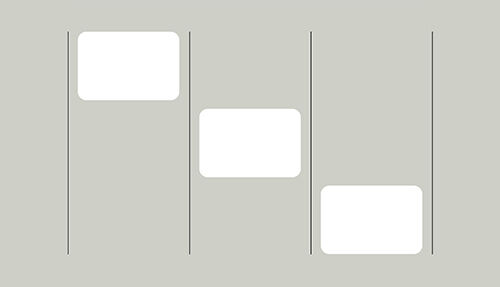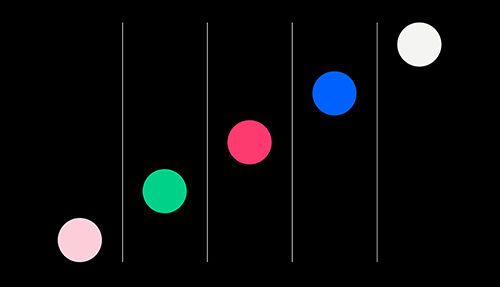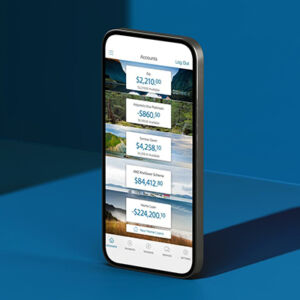Design thinking: Mixing creative process with magic.

Beautiful, effective and innovative design doesn’t happen by accident.
There is design thinking behind how we operate. It lets us express the brand and digital marketing strategies we develop with our clients through a rigorous process that holds the end user at its heart.
Design thinking has of course been around for decades. But it’s become more popular as a result of successful adoption by the big technology companies. Managers now use it and see its value for solving problems and working with teams more creatively. And while design thinking is borrowed from the design sector, agile processes from the software development industry are also being studied to build flexibility and resilience into corporate structures.
-
What’s involved in effective design thinking?
-
Empathise, define, ideate, prototype, test.
-
Creating the best environment for effective design thinking
-
A management philosophy that nurtures the creative process
-
Seeking breakthrough moments
-
A greater focus on user experience (UX)
-
Sourcing user feedback for clients in real time
-
The value of the testing process in design thinking
-
Challenging the norm
What’s involved in effective design thinking?
According to Tim Brown, CEO of IDEO, design thinking is defined as, ‘. . . a human-centred approach to innovation that draws from the designer's toolkit to integrate the needs of people, the possibilities of technology, and the requirements for business success.’
The common understanding follows five key steps:
Creating the best environment for effective design thinking
The above process sounds thorough, right? But it doesn’t convey the ‘magic’ that can flow in the creative process. The myth of the lonely artist in a garret creating great art has struck a chord in the collective imagination for a long time, but it’s not the reality.
Great artists and designers have always worked in collaborative groups. And the design thinking process is very collaborative indeed. But I’d argue that you’re not going to get good creative results unless the overall environment is right.
Our design practice at Dave Clark is now twenty years old (2001). I’ve worked with my three design partners Andy Brown, Andrew Smith and Jonathan Tillick for over twenty years. Together we’ve created a nurturing, kind and supportive environment that enables great design work to be created. This includes ensuring a watertight client brief, and having experienced, responsive, analytical account managers on board.
But what really makes the difference is the way our creative team colleagues are respected, encouraged, supported and rewarded. Talented people who practically fly when their questioning minds are unleashed on a problem to solve. They soar into the stratosphere and return with the gifts of their distilled thinking.
A management philosophy that nurtures the creative process
Having worked in the design industry for over three decades, I've always thought there's a lot of similarity between the design and the movie industry.
In the book Creativity Inc: Overcoming the Unseen Forces that Stand in the Way of True Inspiration, by Ed Catmull and Amy Wallace, Catmull (co-founder of Pixar Animation Studios), outlines how he and his colleagues created a unique environment with a management philosophy that protected and nurtured the creative process. A good illustration of this thinking: ‘Give a good idea to a mediocre team, and they will screw it up. But give a mediocre idea to a great team, and they will either fix it or come up with something better.’
Seeking breakthrough moments
Design thinking has been applied successfully by Apple, Nike, IBM and countless other design-oriented and/or digital companies. As with any process its success is derived from the way in which it’s applied.
It’s important to have a framework – a process to run a job through. Yet you sometimes need to deviate from or expand the process to land on a groundbreaking concept that turns a category or industry on its head.
Revolutionary ideas come from people identifying a gap or niche in the market and generating an amazing solution to fill this niche. Just think of Spotify, Uber and Airbnb. There are countless other examples of ideas that no one had anticipated or realised they wanted until they saw the possibilities and embraced the concept – the internet, streaming, mobile phones, electric cars, and so on.
A greater focus on user experience (UX)
The user/consumer has to be an integral component of any effective design thinking process. In recent years there’s been an increasing emphasis on UX – whether it’s creating an experience that’s fun and pleasurable, useful and practical and/or meaningful. So we’re working more closely with our clients to understand the user’s issues, needs, problems and expectations. Some people refer to this process as ‘discovery’ or ‘research’. I think that ‘empathising’ is a more helpful term, because it implies a journey towards an emotional as well as an intellectual understanding.
Next we put our energy into meeting or, better still, exceeding user expectations. Testing prototypes on the people who will actually be using them has become essential to the design thinking process.
Sourcing user feedback for clients in real time
We’ve created a test lab and a screening facility that lets our clients, designers and account managers view and listen to real-time user feedback on the prototype design solutions we’ve developed.
The testing process needs to be carefully managed by a team with the necessary expertise and experience. Otherwise there’s a risk that the users testing a prototype will only respond in the context of what they already know or have experienced – they don’t know what they don’t know. So they won’t realise what else might be possible.
Following a design thinking process in a very rigorous manner results in positive outcomes for our clients. Here’s an example.
Our client ANZ Bank wanted to introduce IMTs (international money transfers) to its goMoney banking app, leveraging what we had learned from internet banking. Four key user groups included:
1. Migrants sending money home to family
2. Kiwis travelling overseas transferring money to offshore accounts
3. Small to medium-sized importers making payments
4. goMoney users wanting to transfer money overseas
Past experiences with internet banking showed that many users often gave up part way through the IMT process. If they made it to the end, there was a good chance their transfer was rejected because it didn’t meet set criteria.
For our client, observing customers in our testing process using the prototype and indicating their likeliness of using it was a real eye-opener. It became clear that pricing and transparency played a large part in the overall buying decision and customer experience. As a result of the insights we gained, fees were lowered, made more transparent, and in some cases joined together to make it simpler for customers to understand.
This is a prime example of good design thinking being good for business.
Empathise, define, ideate, prototype, test.
For designers, the design thinking process has become second nature, an intuitive and reflexive way of working. So trying to explain it isn’t easy, but here’s what our version of design thinking looks like in practice:
Adopt a well-defined system for understanding the problem or opportunity.
Research the business and customer needs and market competitors.
Define and create the brand strategy, the creative approach and the digital experience principles.
Generate designs and ideas for creative executions and content structures that we believe will work.
Apply a thoughtful critiquing process to explore and select the best design solutions.
Test the prototypes with customers.
Roll out the best solutions into detailed design executions and digital products.
Deliver – check the quality and go live/to market.
Measure and review effectiveness.
The value of the testing process in design thinking
It’s incredibly important to remember that not everything can be based on testing workshop outputs. Testing insights can be very powerful, but the invention or the idea doesn’t directly flow from it. If the briefing, researching and idea-generating processes have been robust, what usually comes out of testing is tweaks, enhancements and confirmation if we’re on target. Although testing is important, it’s not the starting point.
You don’t want a process that kills off potentially good ideas too soon. It’s all about striking a balance between sourcing feedback and not allowing it to become a limiting factor. The point of testing workshops is to gain more insights that will extend the possibilities and lead to or encourage out-of-the-box thinking.
Challenging the norm
Is design thinking a secret sauce recipe that allows businesses to obtain easy creative ideas? No, but it does articulate ways that a business can understand and possibly emulate how the creative process can be partly systemised – providing a lot of linking factors are in place.
The design thinking process doesn’t really describe or illuminate the amazing ability of human beings to envision enormously powerful ideas from nothing, without any process at all.
At its best, design thinking encourages approaches and insights that push design, creativity and problem solving into new territories. You want to consistently challenge the norm:
Never stop asking ‘what if?’
Never lose the confidence to think outside the box.
Don’t eliminate potentially good ideas too soon in the brainstorming process.
If you come up with a magic idea, but it doesn’t serve the user, get a new wand.
Vanilla belongs with baking, not business solutions.
Resist dumbing down – users are smart.
Users will ‘get’ what you’re offering if you speak their language and get them excited about your message.
A robust design thinking process does all this and more. However, the ultimate test of the effectiveness of the process is whether it makes a difference to your business. And that’s what we’re here to do.







